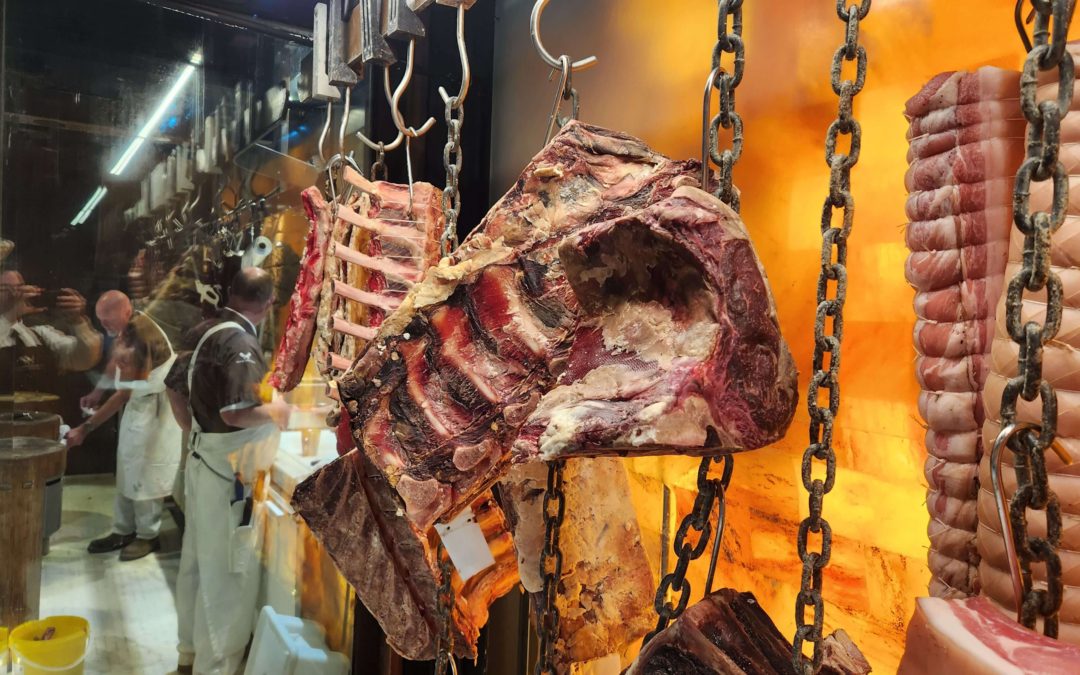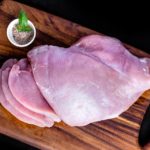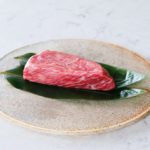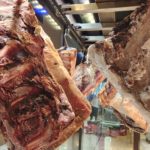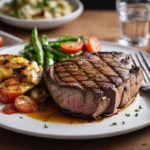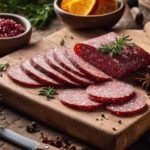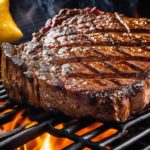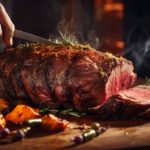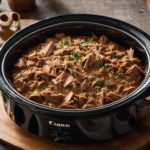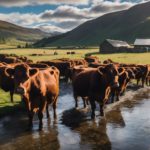I have always been fascinated by the process of dry aging meat and the incredible flavors it brings out in the final product. In this article, I will share with you the art of dry aging meat and how you can perfectly age prime rib to achieve the most tender and flavorful results.
From selecting the right cut of meat to creating the ideal aging environment, I will guide you through every step of the process, ensuring that your prime rib turns out absolutely sublime. So grab your apron and prepare to elevate your culinary skills to new heights as we embark on this delicious adventure together.
Choosing the Right Meat
When it comes to dry aging meat, selecting the right cut is crucial. For a flavorful and tender dry aged prime rib, it is important to start with a high-quality piece of meat. Look for a prime rib roast that has a good amount of marbling, as this will contribute to the richness and flavor of the final product. Additionally, choose a roast that has been properly aged for a minimum of 21 days to ensure optimal tenderness.
Selecting a Prime Rib
When selecting a prime rib, consider the size and weight of the roast. This will depend on the number of guests you will be serving and your personal preferences. Keep in mind that a bone-in prime rib will have more flavor, but a boneless roast may be easier to carve. It is also important to check the color of the meat. A deep red color indicates better quality and a well-aged piece of meat.
Understanding the Cut Process
To fully appreciate the art of dry aging meat, it is important to understand the cut process. A prime rib, also known as a standing rib roast, comes from the rib section of the cow. It consists of several ribs and can range in size from two to seven ribs. The ribs are typically left intact to provide additional flavor during the cooking process. When the prime rib is dry aged, it allows the meat to develop a more concentrated flavor and tender texture.
Equipment and Environmental Factors
To successfully dry age prime rib at home, it is essential to have the right equipment and maintain proper environmental factors.
Refrigeration
Refrigeration is a key factor in the dry aging process. A dedicated refrigerator, separate from the one used for everyday food storage, is highly recommended. The temperature of the refrigerator should be set between 34 and 38 degrees Fahrenheit (1 to 3 degrees Celsius) to slow down the growth of bacteria. It is important to note that regular household refrigerators may not provide consistent temperature control, so investing in a specialized aging fridge may be beneficial.
Humidity Control
Maintaining the proper humidity is another important aspect of dry aging. The ideal humidity range for dry aging meat is between 75% and 85%. This helps prevent excessive moisture loss from the meat, leading to a more tender final product. To control humidity, you can use a humidifier or place a pan of water in the refrigerator to increase moisture levels.
Air Circulation
Good air circulation is essential for successful dry aging. Proper airflow helps remove excess moisture from the meat and promotes the development of a dry, protective crust. To achieve adequate air circulation, ensure that there is sufficient space around the meat in the refrigerator and avoid overcrowding. Placing the meat on a wire rack or using a specialized dry aging mat can also help facilitate air circulation.
Preparing the Meat
Before dry aging the prime rib, it is important to properly prepare the meat to ensure maximum flavor and tenderness.
Trimming the Fat
Trimming the fat is an essential step in preparing the prime rib for dry aging. While some fat can contribute to flavor and tenderness, excess fat can insulate the meat and prevent it from properly drying. Use a sharp knife to trim away any thick layers of fat, leaving a thin, even layer. This will allow the meat to develop a flavorful crust during the aging process.
Seasoning the Meat
Seasoning the meat is an optional step in the dry aging process and can be done before or after the aging period. Some people prefer to season the prime rib with a dry rub or a combination of salt, pepper, and other spices at the beginning of the aging process. This allows the flavors to penetrate the meat as it ages. Others choose to season the meat just before cooking to enhance the flavors on the surface. Experiment with different seasoning techniques to find what works best for your taste preferences.
The Dry Aging Process
Dry aging is a process that involves hanging the meat in a controlled environment for a specific period of time. This allows the natural enzymes in the meat to break down muscle fibers, resulting in a more tender and flavorful end product. Understanding the key factors in the dry aging process is essential for achieving the desired results.
Dry Aging Time
The length of the dry aging process will depend on personal preference and the desired flavor profile. Shorter aging periods, such as 21 to 28 days, will yield a milder flavor, while longer aging periods, such as 45 to 60 days or even more, will result in a more intense, nutty flavor. It is important to note that longer aging times can also result in more moisture loss, so consider this when deciding on the duration of the aging process.
Temperature Control
Maintaining the correct temperature is crucial during the dry aging process. As mentioned earlier, a dedicated refrigerator or aging cabinet with precise temperature control is recommended. The ideal temperature for dry aging prime rib is between 34 and 38 degrees Fahrenheit (1 to 3 degrees Celsius). Consistent temperature control ensures that the meat ages evenly and minimizes the risk of spoilage.
Monitoring the Meat
Regularly monitoring the meat during the aging process is essential to ensure its safety and quality. Regularly check for any signs of spoilage, such as off odors or excessive mold growth. It is normal for a thin layer of mold to develop on the surface of the meat, but any excessive mold should be removed. Additionally, keep an eye on the moisture levels and adjust the humidity as needed to prevent excessive drying or moisture buildup.
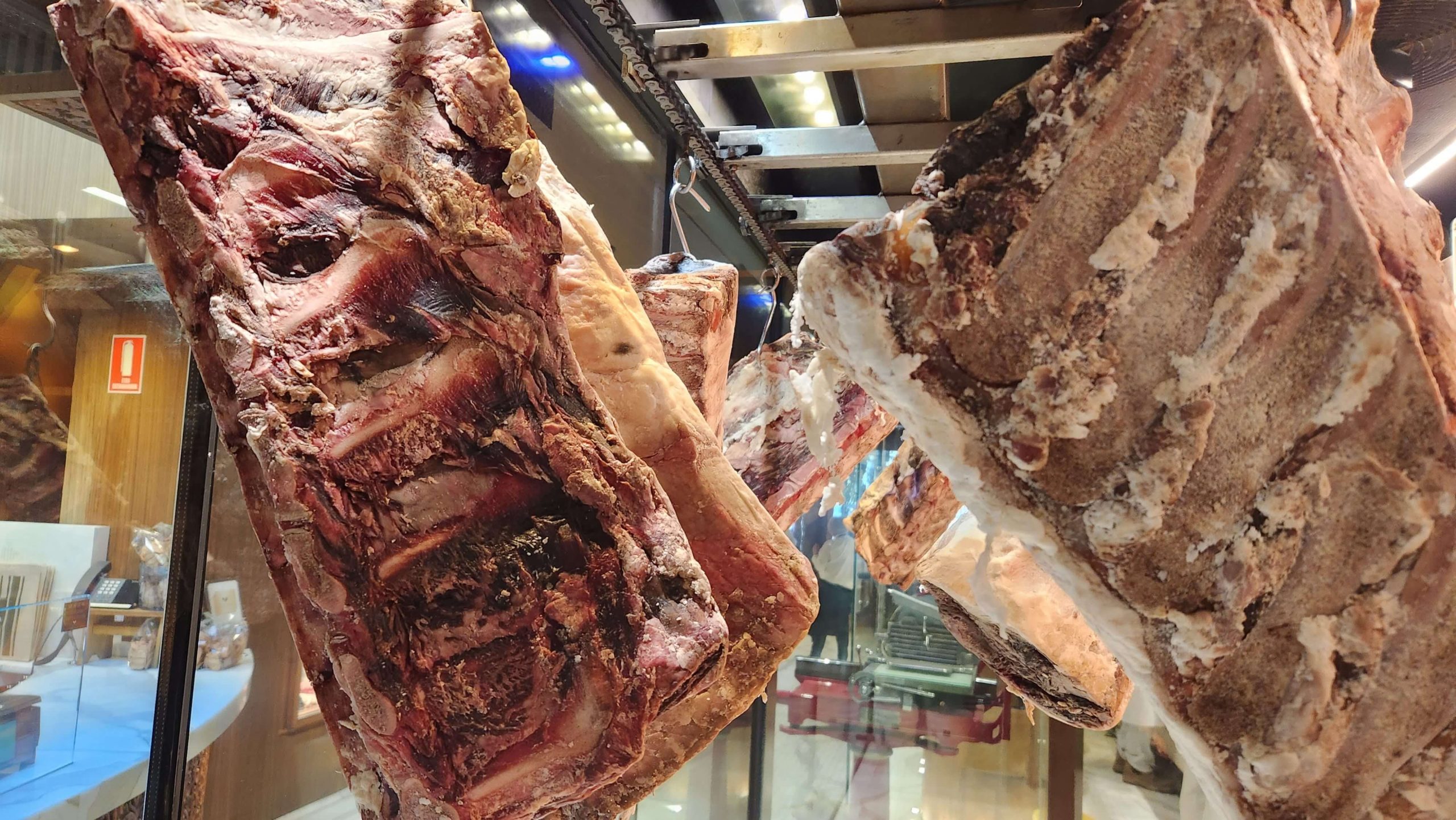
Handling and Storage
Proper handling and storage of dry aged prime rib are crucial to maintain its quality and safety.
Safe Handling Practices
When handling dry aged meat, it is important to follow safe food handling practices. Always wash your hands thoroughly before and after handling the meat to prevent cross-contamination. Use separate cutting boards and utensils for raw and cooked meat. Additionally, ensure that the meat is stored away from other food items to avoid any potential contamination.
Storing Dry Aged Meat
Once the dry aging process is complete, it is essential to store the meat properly to maintain its quality. If you plan to cook the prime rib within a few days, you can keep it in the refrigerator. However, if you need to store it for a longer period, it is recommended to transfer the meat to vacuum-sealed bags or wrap it tightly in butcher paper and store it in the freezer. Proper packaging helps prevent freezer burn and maintains the flavor and texture of the dry aged prime rib.
The Flavor and Texture of Dry Aged Prime Rib
One of the main reasons why dry aged prime rib is highly sought after is its concentrated flavor and tender texture.
Concentrated Flavor
During the dry aging process, the moisture in the meat evaporates, intensifying the flavors. The enzymes naturally present in the meat break down muscle fibers, resulting in a more tender texture. The aging process allows the meat to develop complex and nutty flavors that are unique to dry aged prime rib. The longer the meat is aged, the more pronounced these flavors become.
Tender Texture
Dry aged prime rib has a distinct texture that sets it apart from fresh cuts. The prolonged aging period allows the natural enzymes to tenderize the meat, resulting in a buttery and melt-in-your-mouth texture. The slow breakdown of muscle fibers during dry aging creates a more tender and succulent end product, making it a popular choice among meat lovers.
Common Mistakes to Avoid
Dry aging prime rib requires careful attention to detail. Avoiding common mistakes will ensure the best possible outcome.
Improper Refrigeration
Inadequate refrigeration can lead to spoilage and compromise the quality and safety of the dry aged prime rib. It is important to use a dedicated refrigerator or aging cabinet with precise temperature control to maintain a consistent and optimal temperature range.
Inadequate Air Circulation
Proper air circulation is essential for the dry aging process. Overcrowding the refrigerator or failing to provide enough space around the meat can hinder the development of a dry, protective crust and promote the growth of unwanted bacteria. Ensure that the meat is properly spaced and consider using a wire rack or a dry aging mat to enhance air circulation.
Skipping Trimming or Patience
Trimming excess fat from the prime rib is crucial to allow for proper drying and flavor development during the aging process. Skipping this step can result in uneven drying and compromised flavor. Additionally, patience is key when dry aging meat. Rushing the process or cutting corners can lead to subpar results. Allow sufficient time for the enzymes to work their magic and develop the desired flavors and texture.
Different Methods for Dry Aging
There are several methods for dry aging prime rib, each with its advantages and considerations. Here are three common methods:
Dry Aging in a Refrigerator
Dry aging in a dedicated refrigerator is a popular method for home dry aging. By using a separate refrigerator solely for aging meat, you can control the temperature and humidity more precisely. This method requires some initial investment in equipment but allows for a controlled and efficient dry aging process.
Dry Aging in a Dedicated Aging Cabinet
Aging cabinets, specifically designed for dry aging meat, offer precise temperature and humidity control, making the dry aging process more manageable. These cabinets often come with built-in air circulation systems that further enhance the aging process. While aging cabinets may be more expensive than using a dedicated refrigerator, they can provide consistent results.
Dry Aging in a Dry Aging Bag
Dry aging bags, also known as UMAi bags, provide an alternative method for dry aging prime rib. These specialized bags allow for the dry aging process to occur in a regular refrigerator without the need for additional equipment. The bags create a controlled microclimate around the meat, allowing for proper moisture loss and flavor development. This method is relatively cost-effective and convenient for those who do not have access to a dedicated aging refrigerator or cabinet.
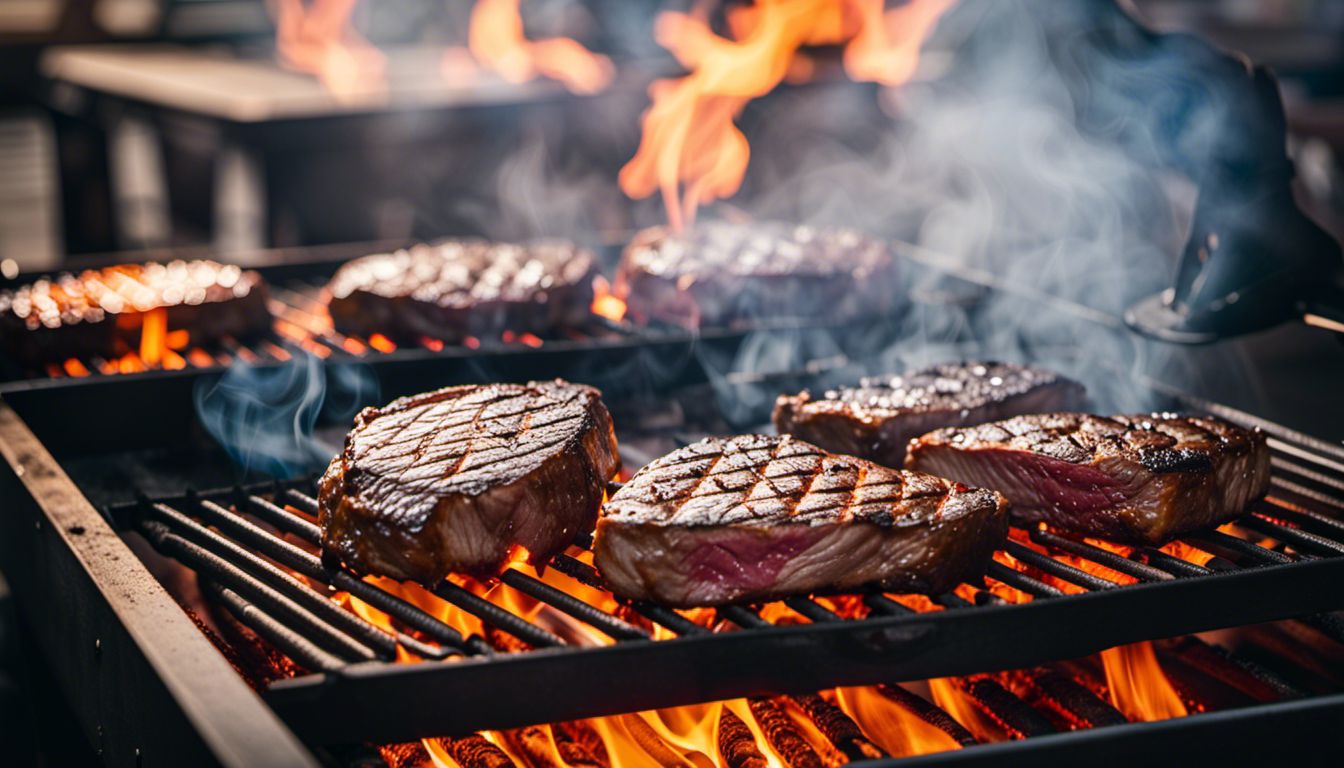
When is the Meat Ready?
Determining the readiness of dry aged prime rib requires careful observation and evaluation.
Determining Readiness
One of the most common indicators of readiness is the appearance of a dry, protective crust on the surface of the meat. The crust acts as a barrier against bacteria and contributes to the concentrated flavors. Additionally, the meat should feel firm to the touch and no longer have a wet or tacky texture. Developing a familiarity with the dry aged prime rib’s appearance and texture will help determine its readiness.
Taste and Texture Testing
To further evaluate the readiness of the dry aged prime rib, perform a taste and texture test. Take a small portion of the meat and cook it to your desired doneness. Pay attention to the flavors and tenderness. If the meat has developed the desired flavor and texture, it is ready to be cooked and enjoyed. If not, continue the aging process and monitor the meat closely until it reaches the desired state.
Cooking Dry Aged Prime Rib
Once the dry aged prime rib is ready, it is time to cook it to perfection. Here are some tips for achieving a delicious and tender prime rib.
Choosing a Cooking Method
There are several cooking methods to choose from when it comes to dry aged prime rib. Popular options include slow roasting, reverse searing, and grilling. The cooking method you choose will depend on your personal preference and the equipment available. Regardless of the method, it is important to allow the prime rib to come to room temperature before cooking to ensure even cooking and a juicy end result.
Tips for Perfectly Cooked Prime Rib
To ensure your dry aged prime rib is perfectly cooked, consider the following tips:
- Use a meat thermometer to monitor the internal temperature. For a medium-rare prime rib, aim for an internal temperature of 130 to 135 degrees Fahrenheit (54 to 57 degrees Celsius).
- Let the meat rest after cooking. This allows the juices to redistribute and ensures a more flavorful and tender end result.
- Tent the meat with foil while resting to retain heat and prevent excessive moisture loss.
- Season the cooked prime rib with salt and pepper to enhance the flavors before serving.
By following these tips, you can achieve a mouthwatering dry aged prime rib that is tender, juicy, and bursting with flavor.
In conclusion, the art of dry aging meat is a time-honored technique that results in a prime rib of exceptional quality.
Through careful selection of the right cut, proper equipment and environmental control, preparation techniques, and understanding of the dry aging process, you can create a dry aged prime rib that is truly remarkable.
Remember to avoid common mistakes, choose the right dry aging method for your needs, and evaluate the readiness of the meat before cooking. With patience and attention to detail, you can enjoy the concentrated flavors and tender texture of a perfectly aged prime rib. Happy dry aging!
Greetings!
With over two decades of diverse experience in the meat industry, I proudly stand as an expert in all things meat. My journey commenced with a strong foundation in hospitality, where I honed my culinary skills as a chef in prestigious restaurants and on luxurious superyachts worldwide.
However, my true passion lies in the art of butchery. Throughout my extensive career, I have had the privilege of working with renowned meat purveyors and mastering the craft of meat cutting and preparation. From breaking down whole carcasses to meticulously selecting prime cuts, my butchery expertise is at the core of my meat knowledge.
Having immersed myself in various cultures and cuisines, I have honed my skills to deliver exceptional dining experiences, crafting delectable dishes that celebrate the natural flavors of different meats. Whether it's sourcing the finest meats for discerning clients or sharing valuable tips on meat selection and cooking, I take pride in elevating the meat experience for both professionals and enthusiasts.
My journey has taken me from the bustling kitchens of top-rated restaurants to the heart of meat processing facilities, gaining insights and honing my skills to become a true meat connoisseur. Now, I am enthusiastic about sharing my expertise, offering valuable insights on meat selection, cooking techniques, and the art of butchery.

